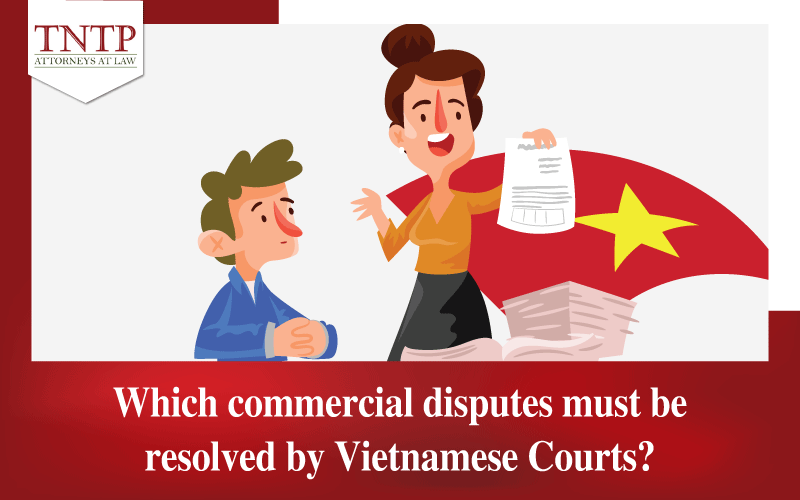Efficient debt collection steps for businesses (Part 2)
Continuing from the first part, in this article TNTP will analyze in detail the debt collection process for businesses during the litigation phase at the competent authority to resolve disputes. This is a complex process that requires handling experience to ensure work efficiency. Therefore, based on its experience, TNTP will provide specific steps to explain to businesses so they can understand the process and serve their debt collection.
Step 2: Filing a lawsuit at the competent authority to resolve disputes
In cases where the business has used all measures to contact the debtor but has not achieved results due to the debtor’s unwillingness to voluntarily pay the debt, the business may consider filing a lawsuit against the debtor and requesting the debtor to fulfill the obligation to pay at the competent authority to resolve disputes, including the Arbitration Center or the competent court, depending on the dispute resolution authority that the parties have chosen in the contract or agreement.
1. Filing a lawsuit at the Commercial Arbitration Center
To file a lawsuit at the Commercial Arbitration Center, the parties must agree in the contract to choose the Commercial Arbitration Center to resolve any disputes arising during the contract execution (referred to as the “Arbitration Agreement”). If the parties do not have an Arbitration Agreement in the contract, they cannot file a lawsuit at the Commercial Arbitration Center.
When initiating a lawsuit at the arbitration center, the enterprise is required to submit a dossier including:
• The lawsuit petition
• An explanation of the case
• Documents proving the enterprise’s request for the lawsuit, such as contracts between parties, invoices, delivery notes, warehouse receipts, payment requests, etc.
• Documents proving the legal status of the enterprise as a legal entity
• Documents proving the legal status of the debtor
• Contact information of the debtor
After receiving the enterprise’s lawsuit dossier, the Arbitration Center will inform the enterprise of the selection of an arbitrator to resolve the case. After the enterprise completes the procedure of selecting the arbitrator or fails to elect an arbitrator, the arbitration center will proceed to select an arbitrator and establish an Arbitration Council to resolve the dispute.
The Arbitration Council will act on behalf of the Arbitration Center to conduct dispute resolution. If the enterprise proves that its lawsuit request is legitimate, the Arbitration Council will issue an Arbitration Award that has the force of an enforceable judgment. At that point, the enterprise may submit the Arbitration Award to the competent enforcement authority to request necessary measures to recover the debt.
2. Filing a lawsuit in a competent court
In cases where there is no agreement on arbitration in the contract between the parties, the dispute resolution authority will be the competent court. The filing of a lawsuit in a competent court is carried out according to the provisions of the Civil Procedure Code, under which the enterprise needs to accurately determine the competent court for jurisdiction. Otherwise, the enterprise’s lawsuit may be returned by the court.
After determining the competent court to resolve the case, the enterprise needs to submit a lawsuit dossier, including:
• A petition for filing a lawsuit
• A statement of the case
• Documents proving the enterprise’s claim for filing a lawsuit, such as a contract between the parties, invoices, bills of lading, delivery notes, payment requests, etc.
• Documents proving the enterprise’s legal entity status
• Documents proving the legal entity status of the debtor
• Contact information of the debtor
After receiving the enterprise’s lawsuit dossier, the court will examine the dossier and assign a judge to handle the case. If the enterprise’s dossier is complete, the court will issue a Notice of Acceptance of the case.
After issuing the Notice of Acceptance of the case, the court may summon the parties to attend reconciliation sessions and publicly present evidence. Here, the enterprise and the debtor can reconcile or provide additional documents and evidence to protect their rights and interests. If the parties agree on a reconciliation plan, the court will issue a Decision recognizing the reconciliation of the parties, which is equivalent to a Judgment and can be enforced.
In cases where the parties cannot reconcile, the court will proceed with the trial process. The court will conduct a trial based on the content of the documents and evidence provided by the parties or collected by the court to issue a First-instance Judgment. This Judgment will be legally effective and enforceable within 15 days from the date of the verdict unless the parties file an appeal or protest.
In case either party appeals or protests the verdict within 15 days from the date of the judgment, the case will be resolved by the Court of Appeal according to the procedures prescribed in the Criminal Procedure Code.
After the trial process is completed and the verdict becomes legally effective, the enterprise may submit a Request for Enforcement to the competent authority to request the enforcement agency to take necessary legal measures to recover the debt.
The above is the content of TNTP’s article on “Effective debt collection steps for enterprises”, hope that this article will be helpful in the debt collection process of enterprises.
Best regard,



